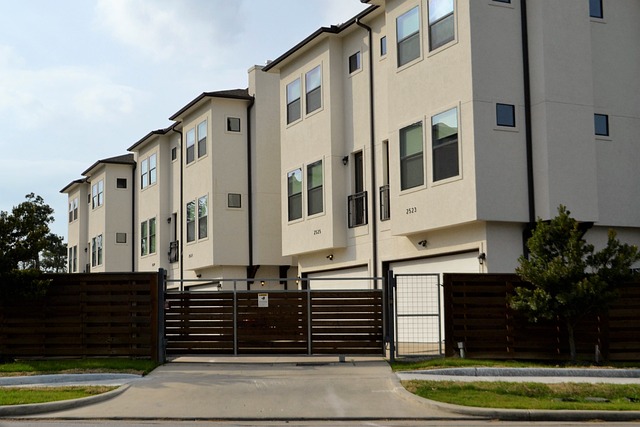Rising Rates, Rising Rents: What Does It Mean For U.S. Housing Affordability?
Welcome to the frontlines of the U.S. housing market, where the twin titans of rising rates and rising rents are reshaping the landscape of affordability. As interest rates ascend and rental prices reach new heights, the quest for affordable housing becomes an increasingly intricate puzzle for Americans from coast to coast.
Exploring the maze of economic forces and societal shifts driving these trends is pivotal. From the impact on first-time homebuyers to the challenges facing renters, understanding the factors at play is essential to navigating this evolving terrain.
Understanding Rates and Rents
Understanding rates and rents in the U.S. housing market is like deciphering a complex puzzle with economic pieces. Interest rates, the heartbeat of mortgage lending, are influenced by a myriad of factors, from inflation expectations to global economic trends and the Federal Reserve’s monetary policies. When interest rates rise, mortgage rates follow suit, tightening the financial belt for aspiring homeowners. This uptick in rates translates to higher monthly mortgage payments, making homeownership more costly and potentially dampening demand.
However, it’s not all gloom and doom; rising interest rates can also signify a robust economy, which can lead to increased wages and overall prosperity, albeit with a pinch on the housing budget. So, while navigating the ebb and flow of interest rates may feel like a rollercoaster ride, understanding their influence is key to mastering the art of homeownership in the ever-fluctuating landscape of the housing market.
The Phenomenon of Rising Rents
Rising rents across the U.S. paint a vivid picture of the evolving housing market, influenced by a tapestry of factors. Urbanization, population growth, and a shortage of affordable housing stock form the backdrop of this narrative, pushing rental rates steadily upward. However, the story isn’t one-size-fits-all; regional variations add nuance to the plot.
In bustling metropolises like New York City and San Francisco, skyrocketing rents have become almost legendary, driven by high demand and limited supply. Meanwhile, smaller cities and suburban areas experience their own rental renaissance, fueled by shifting demographics and lifestyle preferences.
For renters, this upward trajectory translates into tighter budgets and tough choices, as a larger chunk of income flows into housing expenses. The quest for affordability prompts creative solutions, from seeking roommates to exploring alternative housing arrangements. In this dance of supply and demand, understanding the rhythm of rising rents becomes essential for those navigating the ever-changing landscape of rental housing in America.
Challenges to Housing Affordability
The housing market’s affordability crisis casts a shadow over the American Dream, posing daunting challenges for a wide spectrum of individuals and families. Low-income households and renters bear the brunt of this predicament, caught in the crossfire of rising rates and rents. As housing costs escalate beyond their means, the specter of homelessness looms large, threatening stability and security.
For many, unaffordable housing translates into a daily struggle against financial stress, as they juggle competing priorities and sacrifice essentials to keep a roof overhead. In this tale of affordability woes, the plot thickens as communities grapple with the repercussions of housing insecurity.
Yet, amid the gloom, glimmers of hope emerge through advocacy, policy reform, and innovative solutions, illuminating pathways toward a brighter, more accessible housing future for all.
Effects on Homeownership
With mortgage rates on the climb and rental prices reaching new heights, the path to homeownership becomes increasingly steep. First-time homebuyers, in particular, face formidable affordability hurdles as they strive to save for down payments while navigating escalating housing costs. These rising barriers threaten to reshape homeownership trends, potentially leading to a decline in ownership rates as more individuals and families find themselves priced out of the market.
Our recent survey found Port Orange, FL experienced the highest home price increase in Q1 2024. Wyse Home Team house listings showed a 13.8% rise in sale prices.”
However, amidst these challenges, there remains strong optimism as communities and policymakers seek to address the root causes of housing affordability, fostering a more inclusive and accessible path to the American dream of homeownership.
Implications for Rental Market
As rental prices soar, finding affordable housing becomes an increasingly daunting task for renters across the country. Many face the challenge of stretching their budgets to cover rising costs, often sacrificing other essentials to keep a roof over their heads.
In response to this pressing issue, rental assistance programs and policy solutions play a crucial role in providing support to those in need, offering a lifeline to renters struggling to make ends meet. By addressing the root causes of housing affordability and implementing targeted interventions, there’s hope for a brighter future where all individuals and families can find safe, stable, and affordable housing in their communities.
Long-Term Outlook and Solutions
Looking ahead, the future trends in interest rates and rental markets appear to be on a trajectory of continued evolution. While predictions may vary, there’s a general consensus that interest rates are likely to fluctuate in response to economic conditions and policy decisions. Similarly, the rental market is expected to grapple with ongoing affordability challenges, driven by factors such as population growth, urbanization, and supply constraints.
To effectively address these issues, it’s imperative to tackle the underlying causes of housing affordability challenges head-on. By implementing comprehensive solutions that prioritize affordable housing development, encourage sustainable urban planning, and support equitable access to housing opportunities, there’s reason for optimism.
Despite the complexities of the housing market, the collective efforts of communities, policymakers, and stakeholders offer hope for a future where housing affordability is not just a dream but a reality for all.

